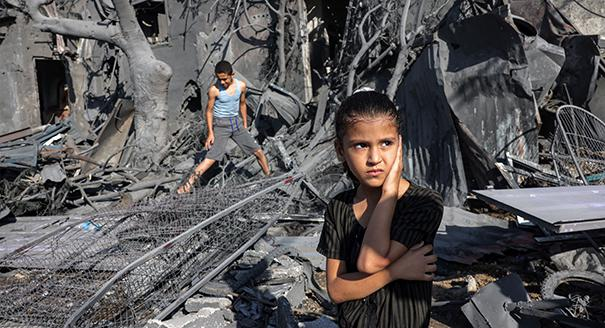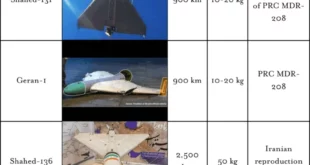As the conflict in the territory continues, getting to know more about likely trajectories has become a necessity.
A day after the horrific attacks of October 7, I was not only shocked but also profoundly unsure about what would happen next. Some things were already clear. Immediately, the political actors retreated into their own bubbles and any sense of common humanity disappeared. I was confident that these actors would behave with the same disregard for long-term consequences that had led them so deeply into the current situation.
But where their impulses would lead them and what they would actually be able to do was less clear. As a result, I could not see a clear outcome except that “when the dust settles, the people of Israel-Palestine will be left facing each other with more bitterness, but with no more tools to craft a less violent future.”
A month later, things are a bit clearer. Most of those earlier suspicions have been borne out to a degree that dismays me. Last week, I wrote a prognosis based on the idea that the dust may not settle in Gaza. That piece was motivated in part by an unfortunate pattern that I saw arising: When analysts finally turned to the question of outcomes, they proposed arrangements that were based on unrealistic hopes and sometimes profound misunderstandings. (There were calls, for instance, to restore Gaza to the Palestinian Authority’s control, and also to devise a new school curriculum—but of course, school curriculums in Gaza have been among the few remaining ways that the ministries in Ramallah have been effective in Gaza).
So, if the question is not “tell me how this ends” but “tell me how this will evolve,” the answers are still a bit hazy. Many of the uncertainties are known: What will Israel actually accomplish? How many more people will die? How serious are the growing signs of U.S.-Israel tension? But to know more about likely trajectories, I wish to draw attention to five questions that may only be answered by events.
First, is Israel creating smaller and denser Gazas within Gaza by design or default?
Israel is urging civilians in northern Gaza to move south. And it is destroying much housing there as well. A few comments by Israeli officials suggest that something systematic is in the works—but even placing plans and intentions aside, something is clearly happening. The population of the densely populated territory is being shifted to the south and bottled up in smaller enclaves with makeshift arrangements for housing and the supply of basic needs. There is no prospect of a return to the north until an elusive and undefined “day after,” which may not come.
Second, will there be atrocities committed by Israeli ground troops?
The rhetoric from Israeli leaders in the days after the October 7 massacres was frightening. The more extreme statements have diminished, and the minister who said that Gaza might be annihilated with a nuclear weapon was repudiated. Similarly extreme, even murderous, rhetoric from American leaders—to make Gaza look like Berlin and Tokyo after World War II; to kill every member of Hamas; to send in troops with “no rules of engagement”—has also dissipated a bit.
But the danger of such language by officials is not so much that the words might be translated into operational commands, but far more that they signal to troops involved in bitter ground combat that any Palestinian in their sites is a legitimate target, and that there will be no consequences for those who wreak vengeance.
Third, what kind of Hamas will emerge?
Analysts have taken to commenting that Hamas is an “idea”—with Secretary of State Anthony Blinken making clear that the task is “defeating an idea, a perverted idea,” while others doubt that an idea can be eradicated.
This is misleading. Hamas has some positions and ideological statements, but they are vague. They were created by an evolving movement and did not create that movement. If there is any idea behind Hamas it is Hamas itself—that the organization is the Palestinian people’s hope for liberation and must therefore be preserved. In my personal conversations with Hamas members, this is where they often subtly differ from those in other factions: they convey that they are part of something larger than themselves. Fatah members, in contrast, are far more likely to present their personal ambitions and thoughts.
Hamas is also a large and complex organization with many branches—military, diplomatic, political, administrative, recruitment and training, and communications. These are now engaged in what is sometimes referred to as an existential war with Israel. But if it is fateful, the struggle is not likely to be existential. It may be that those active diplomatically will lose their perches; that many Hamas fighters will die; that senior Gazan administrators from the movement will be dismissed. But how the organization will change as a result of this war and what it will do next are very much open questions.
Fourth, how will Fatah evolve?
The Palestinian Authority is a spent force. The Palestine Liberation Organization is a shell. But there is one more Palestinian political actor that, while inert, is still alive. Fatah, especially in the West Bank, is still an organization that is divided by personality and by politics. It is also partly discredited and without clear direction. But it exists not simply at a leadership level but also at the grassroots level. Will parts of Fatah take up armed resistance? Will Fatah reemerge in Gaza, where it has been kept in check by Hamas? It seems unlikely that younger leaders within the movement will be able to revive it fully, but they might give it small doses of vitality—or conversely, they might replicate their elders’ penchant for personal rivalries and short-term maneuvering.
Fifth, who will be making decisions in Israel?
Israel is now involved in its most sustained and extensive military operation since its occupation of Lebanon in 1982, and perhaps since the 1973 war. As it drags on, whose voice will prevail? Will a strategy emerge or only ad hoc decisions? There is a divided political leadership at the apex; a set of military and security structures that have been the target of some members of that political leadership; and a nationalist religious camp that still wields certain levers of power. An Israeli electorate could react in a variety of ways and political leaders will have to face it at some point.
Israel will have to make fateful decisions. While the inclinations of individuals are sometimes clear, it is less clear, even in calmer times, whether policies reflect strategies or a lack thereof. And in the current atmosphere, matters are even murkier. Are today’s military actions, for instance, part of a project for turning the Gaza Strip into a detached Area B—that part of the West Bank in which Palestinian civil institutions operate for Palestinians, but Israel acts in military and security terms as it likes? Or are Israel’s military actions simply explained by the declared Israeli war aims of tossing Hamas out of power and defeating it militarily? Is the refusal to spell out any long-term approaches a cover for precisely such a policy, or an authentic inability to think beyond tomorrow? Is the upsurge in violence in the West Bank against Palestinians a headache the leadership does not want to have to deal with or an opportunity to further cement de facto annexation?
Answers to these questions will likely become clear only over time. And while debates focus on policy options—as they should—the forces that the political actors have unleashed are such that the answers are likely to be determined by events as much as by conscious political action.
 Eurasia Press & News
Eurasia Press & News



